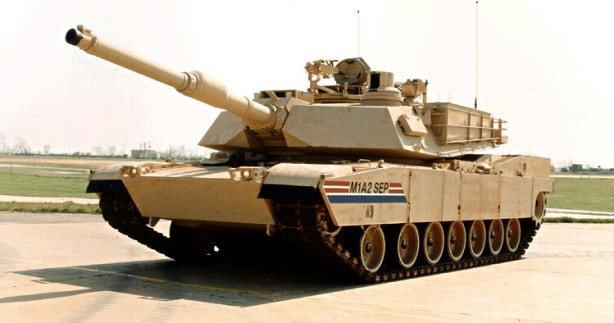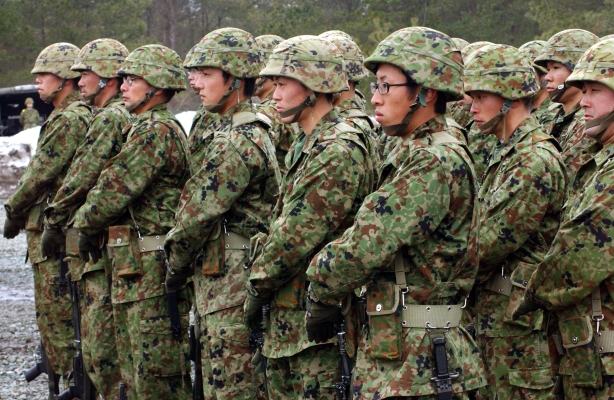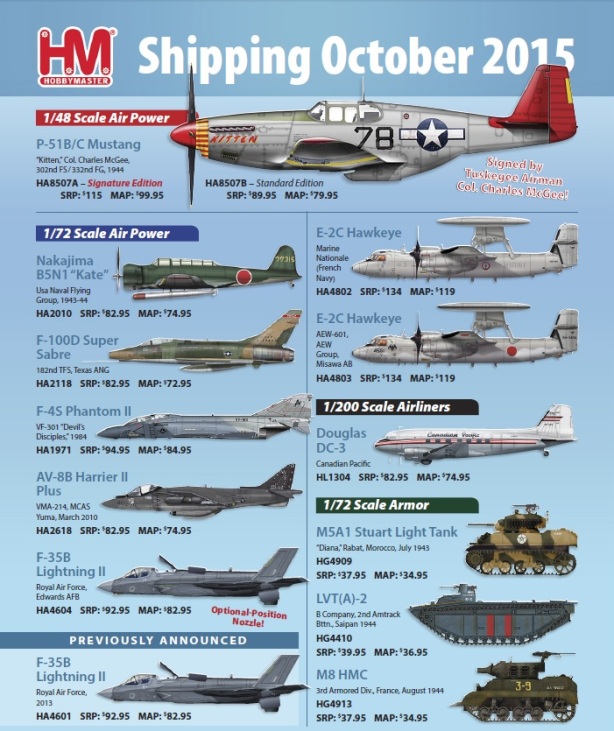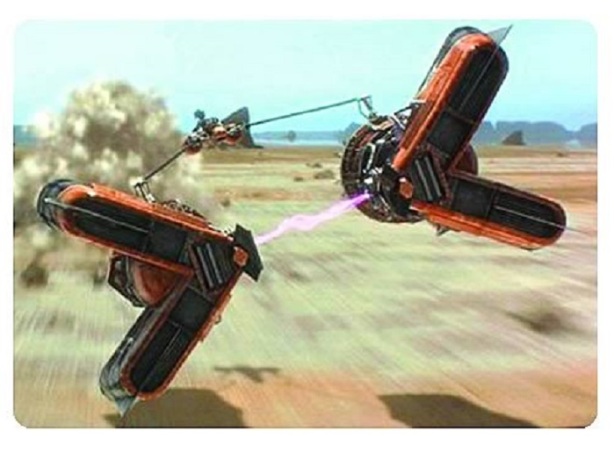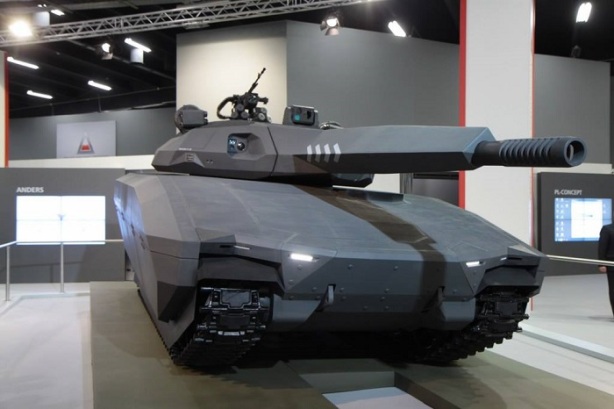Some times I think we’re completely out-of-the-loop when we stumble upon information that could have knocked us over with a feather. While perusing the web, we discovered a brand new web-based film series based upon the original, Gene Roddenberry-created Star Trek television series. Named, aptly enough, Star Trek Continues, these “webisodes” feature all of the familiar characters, sets, costumes, and hokey special effects first witnessed in the 1960s series, going so far as to even include the same dated introduction, sound effects and animations. To view the five uploaded webisodes and see what’s in store for Trekkies, visit: http://www.startrekcontinues.com/
May 2015
The DoD Breathes New Life into the Abrams
Back in 2014, long before the Russian T-14 Armata main battle tank was unveiled to the public, the US Department of Defense awarded General Dynamics with a contract to build 12 advanced main battle tanks with digital vetronics. Dubbed the M1A2 SEP Version 2, the tank, according to Military and Aerospace Electronics, “is considered to be one of the most technologically advanced and most survivable digital tank available worldwide. The networked tank has an electronic backbone, improved processors, high-resolution color displays, increased memory capacity, a day and night forward-looking infrared (FLIR) sighting system, auxiliary power, a tank-infantry phone, and an open architecture designed to accommodate future upgrades without redesigns.”
Its not clear how the upgraded M1A2 SEP V2 will fair against Russia’s new battle tank in a one-on-one slugfest, or whether the Abrams has the ability to defeat other armed threats on the battlefield, particularly from air-launched heliborne assets. This electronics-based upgrade could serve as a short-term solution before the Armata gets fielded en masse, further extending the life-cycle of several thousand battle tanks that have seen service throughout the world with a number of armies.
Signature Goes on Parade
One of the reasons we love Signature Models is that they aren’t afraid to tackle a subject at any scale. Take, for example, their 1:18 scale 1938 Mercedes G4 limousine, which has been a hit amongst the largesse community for several years running. Now, miniaturize it down to 1:43 scale. and you’ve got the same crowd pleaser rumbling down the pre-WWII streets of Berlin for an entirely different audience. Priced at just $59.99, the G4 comes in three flavors: a white and black convertible, as well as a deep blue portrayal with its top up. Look for these in May.
Should Japan Rename Its Armed Forces?
On Thursday, the Japanese cabinet approved a set of bills bolstering the role and scope of its military, as the pacifist country redefines its position in the increasingly roiled Asia-Pacific region. Since the end of the Second World War, Japan had focused solely on the defense of its home islands, going so far as to name its army the Japan Self-Defense Forces. Now, in light of recent hostile moves by North Korea, territorial disputes with both mainland China and Russia over several islands, and terrorism, Japan, at the prodding of several allied nations, looks to protect its interests by expanding its zone of control and mandate for its military. According to Prime Minister Shinzo Abe, “In the past two years, Japanese nationals have fallen victim to terrorism in Algeria, Syria and Tunisia; Japan is within range of hundreds of North Korea’s ballistic missiles and the number of (fighter jet) scrambles has risen seven-fold in a decade. This is the reality. We should not try to ignore it.”
Revisions include removing geographical constraints on logistical support for friendly forces in “situations that would significantly affect Japan’s security.”
They also say Japan can defend allies “in situations where there is a clear risk that Japan’s existence is threatened and its people’s rights…are compromised through an attack on a country which has a close relationship with Japan.”
Erecting a New Wall
In the early 1960s, Russia decided to construct a wall across their section of East Berlin that was designed to keep the city’s inhabitants “within” its borders. Now, fifty years later, Ukraine has decided to build a similar barrier, this time around aimed at keeping Russia out.
According to Russia Today, “Kiev authorities have approved a major new program to isolate the country from Russia by constructing an enormous barrier, equipped with anti-tank ditches and remote controlled weapons stations. They intend to spend $200 million on the grand plan.
On April 14, the Ukrainian cabinet approved a plan for technical arrangements on the Russian-Ukrainian border for 2015-2018.
The plan includes a project initially called ‘The Wall’ or ‘European bulwark’. It’s estimated to be worth 4 billion hryvnias (about $US200 million) and involves the construction of a barbed-wire fence with 17-meter high steelwork turrets. There will also be four-meter wide, two-meter deep antitank ditches, a lateral route and a drag road, remote combat modules, fortified sectors, observation posts, CCTV cameras, communication towers and alarm systems.
The plan is to complete construction within three years, yet previous intentions to erect a barrier on the Russian border floundered due to Ukraine’s lack of cash.
Initially, the idea of digging a ditch on the Russian-Ukrainian border was voiced by the former governor of Dnepropetrovsk region, Ukrainian oligarch Igor Kolomoysky. He even funded a military field engineering vehicle that created a ditch on the border with Russia.”
Barriers have been used with varying results over the course of the past hundred years. The most notable include France’s Maginot Line, Finland’s Mannerheim line, Germany’s West Wall, Israel’s West Bank Barrier, the US-Mexican Border-Enforcement Wall, and the South Korean defensive belt straddling the 38th Parallel. Considering the cost, length of its border with Russia, and much weaker military position with its neighbor to the east, its highly dubious if such a barrier could work in the 21st Century, particularly when Ukraine is already faced with mounting debt to certain international monetary agencies.
Hobby Master Spirits Us Away this October
As is customary for Hobby Master, the Company has just announced their lineup for the October time frame. There’s a smattering of aircraft and vehicles that cover virtually every epoch and conflict, which is cause for celebration for a great many folks. We’re still in the process of listing all of these goodies on our site and hope to have everything up for sale by the close of business today. Enjoy!
Can Air Force 1 Drop the Bomb in Time?
To further flesh out their 1:144 scale catalog, Air Force 1 today announced plans to build a replica of “Enola Gay”, the B-29 Superfortress piloted by Paul Tibbets when it dropped the first atomic bomb on Hiroshima, Japan (#AF10112). Thus far, only a line art drawing has been added to their corporate web site, even though they claim the model will be released at the end of May. Still, this comes as welcome news, since there are a great many post WWII-era bombers that could be integrated into their 1:144 scale range that collectors have been requesting for as long as we’ve been around.
Keep in mind that August 6th represents the seventieth anniversary of the dropping of the A-Bomb on Hiroshima, so it will be interesting to see if this manufacturer can get this bird up and flying in time for the event.
Entering Star Wars Heaven
Our distributor reports that their shipment of DeAgostini Star Wars products are about to arrive at their warehouse, which means we should have them next week. Keep in mind that these are legacy-based vehicles and ships, tied to the first six movies in the series. Moreover, there is no set scale to these highly detailed products, but if you’re a Star Wars fanatic like us, then you’ll still relish collecting these movie favorites.
Fabbri Loads ‘Em Up Again and Fires
Just when you thought it was safe to dip your toe again in the diecast waters comes news that a further eight 1:72 scale military vehicles are being released this month by Fabbri (and distributed through Eaglemoss). The latest grouping includes a Su-100 tank destroyer (#EMR0026), BTR-60 armored personnel carrier (#EMR0027), 2S9-S Nona amphibious tank (#EMR0059), GAZ 2330 infantry mobility vehicle (#EMR0060), British-built Matilda Mk. II infantry tank in Rusian livery (#EMR0061), US-built M3 Lee medium tank in Russian livery (#EMR0062), T-34/85 medium tank in winter camouflage (#EMR0063) and finally a PT-76 amphibious light tank (#EMR0069). All eight vehicles are reportedly available now at our distributor so we should have them in stock in a few days.
The PL-01: Poland’s Answer to the T-14
When you think of the Polish armed forces, most equate it with either their collapse at the outset of World War II or its membership in the Warsaw Pact alliance following the end of the Second World War. However, ever since the end of the Cold War in the early nineties, Poland has allied itself with the West, going so far as to become a member state of NATO in March 1999. Since that time, Poland has quietly developed its own military-industrial complex, and has even begun the arduous task of creating its own next generation main battle tank.
The PL-01 is a Polish armoured fighting vehicle created by OBRUM with support from BAE Systems. The concept vehicle project was first unveiled at the International Defence Industry Exhibition in Kielce on September 2nd, 2013. A full prototype is estimated to be completed in 2016, and should the project be finalized and approved following evaluation, mass production is scheduled to begin in 2018. Looking very much like a futuristic take on David Darke’s “Hammers Slammers,” the layout of the PL-01, nevertheless, is similar to that of modern standard main battle tanks, with the driver located at the front of the vehicle and an unmanned turret mounted in the rear. Within the hull are the commander and gunner, and the rear part of the fuselage can carry four soldiers. The vehicle chassis is based on that of the Combat Vehicle 90.
The vehicle armour has a modular ceramic-aramid shell, which is designed to provide protection compatible with NATO standard STANAG 4569 Annex A at level 5+ within the front portion of the hull and turret. Additional armour panels are mounted on the turret and hull, and are designed to provide full protection against projectiles. The hull of the vehicle provides protection against improvised explosive devices (IEDs) and landmines in accordance with appendix B parts 4a and 4b of the STANAG 4569 standard. The entire vehicle will be covered with radio wave absorbent material.
The PL-01 is to be equipped with a 940 horsepower (700 kW)+ diesel engine coupled to a torque converter, automatic gearbox and driving assistance mechanism. The suspension is based on seven wheels, with the drive shafts having active damping of torsion bars mounted on the first and last two pairs. The vehicle can reach speeds of up to 70 kilometres per hour (43 mph) on paved roads and 50 kilometres per hour (31 mph) in rough terrain with a maximum range of 500 kilometres (310 mi). It can overcome an inclination of 30 degrees, ditches and trenches to a width of 2.6 metres (8 ft 6 in), and cross water obstacles with a depth of up to 1.5 metres (4 ft 11 in) without preparation, and up to 5 metres (16 ft) deep with preparation.
With no clear cut successor to the Abrams in sight, it would be interesting if the US DoD decided to test and procure the PL-01 for the US Army once the Abrams reaches retirement age.


